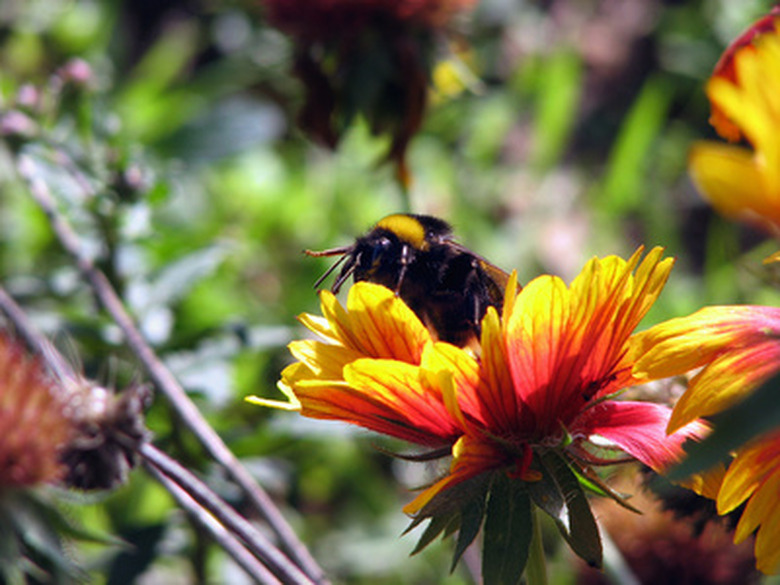What Is The Purpose Of Flowers?
Flowers are essential to the reproduction of flowering plants. Not only do they house and protect the plant's reproductive organs, they also attract animals who act as pollinators or disperse seeds, leading to greater genetic diversity. Furthermore, flowers are essential to the survival of many of the animals on which they depend for pollination.
Female Reproductive Parts
Flowers contain the plant's female reproductive organs. The pistil is visible by looking at most flowers and is the large structure often at the center of the flower and sometimes coated with a sticky substance that gathers pollen. Pollen lands here and fertilizes the ovary located at the base of the flower.
Seed and Fruit Production
As noted, the ovary is inside the flower. The ovary contains multiple structures called ovules. When pollen lands on the pistil, the pollen fertilizes the ovules, which in turn become seeds. The ovary itself, in some flowering plants, swells and develops what is known as a fruit coat, a thick, edible coating of tissue, usually sweet-tasting, that animals consume. The production of seeds and fruit is an especially important role of the flower. Nonflowering plants, such as evergreen trees, produce their seeds on cones that disperse by falling on the ground. Flowering plant seeds, however, have a range of adaptations that allow them to be transported by animals and the wind. The formation of fruit further encourages animals to consume the seeds, transporting them even farther from the parent plant.
- Flowers are essential to the reproduction of flowering plants.
- Nonflowering plants, such as evergreen trees, produce their seeds on cones that disperse by falling on the ground.
Male Reproductive Parts
Inside a flower, there is generally a ring of thin filaments capped by a pollen-coated node. These are the stamen, or male parts of the flower, and they are responsible for producing pollen. The location of the male and female reproductive parts inside of the flower is particularly important to the flower's role in pollination.
Pollination
In order to ensure genetic diversity, two different parents generally produce an offspring. Most flowers can self-pollinate, meaning that the pollen from the stamens can fertilize the ovules inside the same flower. However, this does little to introduce the kind of genetic diversity needed to produce strong offspring. In nonflowering plant species, plants rely on natural forces such as water and wind to transport spores and pollen. For example, evergreen trees need the wind to dust their seeds with pollen. Flowering plants are the most evolutionarily advanced of the plant kingdom because they deliberately attract birds, bats and insects to pollinate for them. The bright colors and sweet scents of flowers lure animals such as bees and hummingbirds. As the animals delve into the center of the flowers to get at the nectar and pollen, pollen grains stick to their bodies and are transferred to the female pistil when they visit other flowers. In this way, pollen can reach flowers separated by miles, a feat that would be nearly impossible using wind and water alone.
- Inside a flower, there is generally a ring of thin filaments capped by a pollen-coated node.
- As the animals delve into the center of the flowers to get at the nectar and pollen, pollen grains stick to their bodies and are transferred to the female pistil when they visit other flowers.
Symbiosis
Flashy, sweet-smelling flowers benefit their plants by encouraging cross-pollination and genetic diversity, but they also benefit the pollinators. Animals such as honeybees and hummingbirds survive on a diet of flower nectar. Still other animals feed on the seeds and fruits that flowers produce. Even as these animals are dispersing seeds, they are deriving nutrition from the plant. Symbiosis refers to a relationship between living organisms that is mutually beneficial, and flowers contribute to the survival of some life on Earth.
